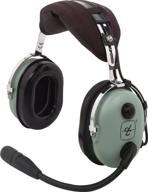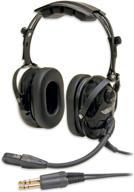
Review on 🔌 VOLTWORKS Power Inverter - 1100W DC 12V to AC 120V, Modified Sine Wave, LCD Display, Remote Control, 2AC Outlets, 2.4A USB Ports for Car RV Truck Boat by Nick Ross

Recommended but there is an issue with the overvoltage requirement
I got this inverter from Voltworks to write a review. I bought another model from them their Pure Sine Wave 2000 Watt Inverter and spoke well about it so they asked me if I would be interested in reviewing this model. Arrived well packaged, build quality is excellent. A quick disassembly of the case revealed the neat circuit board and the use of copper wire on the connectors. (see picture) The transformers used inside the inverter are a bit small, but that's pretty standard for high frequency inverters. I connected it to a 173Ah LiFEPO battery with the supplied twin cables and switched it on. The display was clear and you can watch the voltage gradually reach 120 volts and stabilize. I hooked it up to my oscilloscope and it showed a sine waveform changed by one step. (see image). In the second image of the oscilloscope, the waveform under load. (see image). To test it under load, I used multiple AC heaters and checked power with a kill-a-watt meter. The inverter easily coped with a nominal load of 2000 watts. Remember that the battery draws around 165 amps, so an inverter of this size must be safely connected to a large battery or a regular battery with a large power generator running under load. I hooked up a heater and vacuum to test the inverter's advertised 4000 watts. To be honest, the kill-a-watt meter doesn't show instantaneous or peak power, so it's difficult to determine actual peak power from the capacitive motor units I've tested. When I turned on the vacuum, the inverter turned itself off and showed "overload" on the display. A few seconds later the inverter turned back on and the voltage ramped back up with the vacuum on, slowly reaching speed and then operating within the nominal 2000 watts. Voltworks calls this its "soft start" function. It is designed to prevent the drive from being overloaded when using capacitive motor devices (peak starting loads). I also tested a large DeWalt 15 amp tile saw and it shut down, then started smoothly and the saw worked fine. I retested peak power using only direct resistive loads (heaters) and added a small load over 2000 watts. The inverter switches off immediately and displays "Overload". This does not indicate true peak capacity at all. I discussed this with Voltworks and they insisted it had a pulse performance of a few milliseconds. I explained to them that this isn't actually peak power, because the point of peak power is that the inverter can handle those peak loads for a few seconds (even 5-10 seconds). However, their electronic shutdown and soft start effectively do the same thing, preventing damage to the inverter and allowing the unit to start and run with a surge of power. Of course there can be some sensitive equipment that this slow build up of voltage can damage, but usually motorized equipment that is in the high amp category where this comes into play works well. The inverter comes with a handy remote switch and battery indicator. I also checked the built in USB ports and they put out a true 2.4 amps. I tested the inverter for efficiency with a high load of 1kWh and it got 90%. The stabilized no-load current drawn by the inverter was relatively small at about a third of an ampere from the battery. When the fan was running at high load, it was relatively quiet and the inverter seemed to dissipate the heat well. Note that this is a modified sine wave inverter and some electronics and home appliances are unhappy with the type of juice they produce. The vacuum cleaner with this inverter was significantly slower compared to the Voltworks pure sine model. I give this inverter 4 stars because of the stated power of 4000W, which is not true. If they advertised it as a 2000w inverter with electronic overload protection and soft start capability I would give it 5 stars. If you are looking for a well built modified sine wave inverter, I recommend this model. Just learn more about burst limits and how the soft start works. However, if you're willing to spend the extra money, I'd recommend the Voltwork pure sine wave inverter as the power it produces is the same as the power coming out of your wall. It also has a pulse power limit and uses a soft start. This is my inverter for running small household appliances and occasional tools from a DC power source. If you need an inverter with true surge capability, you should probably look elsewhere until Voltworks can change the way these inverters deal with surges. But for most applications this works fine.
- Pleasing
- Discontinued
New products
Comments (0)
Top products in 🚙 Vehicle Electronics Accessories

Bundle: Bracket 3 Cup Set & 6 FT Power Cord for Beltronics & Escort Radar Detectors (Accessory Bundle)

34 Review

Smart Column Yandex New Station Mini - smart column with Alice (with watch), black onyx

432 Review

💨 LEMOISTAR USB Car Fan, Powerful 4-Speed Wind Circulation Fan for Vehicles SUV RV, Rear Seat Cooling Fan with Durable Hook - 5V USB Powered

38 Review

Waterproof Hard Laptop Sleeve Case For MacBook Pro M1 14-Inch 2021, MacBook Air M2 13.3'' 2022-2018, MacBook Pro M2 13'' 2022-2016, Dell XPS 13, Surface, HP, Acer - Cloudy Marble Design By FINPAC

39 Review
Another interesting products

🎧 Alpha Pilot Headset Flight Bag (Black) – Streamlined Flyer Solution

8 Review

✈️ Enhance Your Aviation Experience with the David Clark H10-13.4 Aviation Headset

9 Review

ASA HS-1 Aviation Headset: Elevating Communication and Safety in the Skies

8 Review

✈️ Enhancing Aviation Safety: ASA-OVC View Limiting Device for Clearer Vision in Overcast Conditions

9 Review

